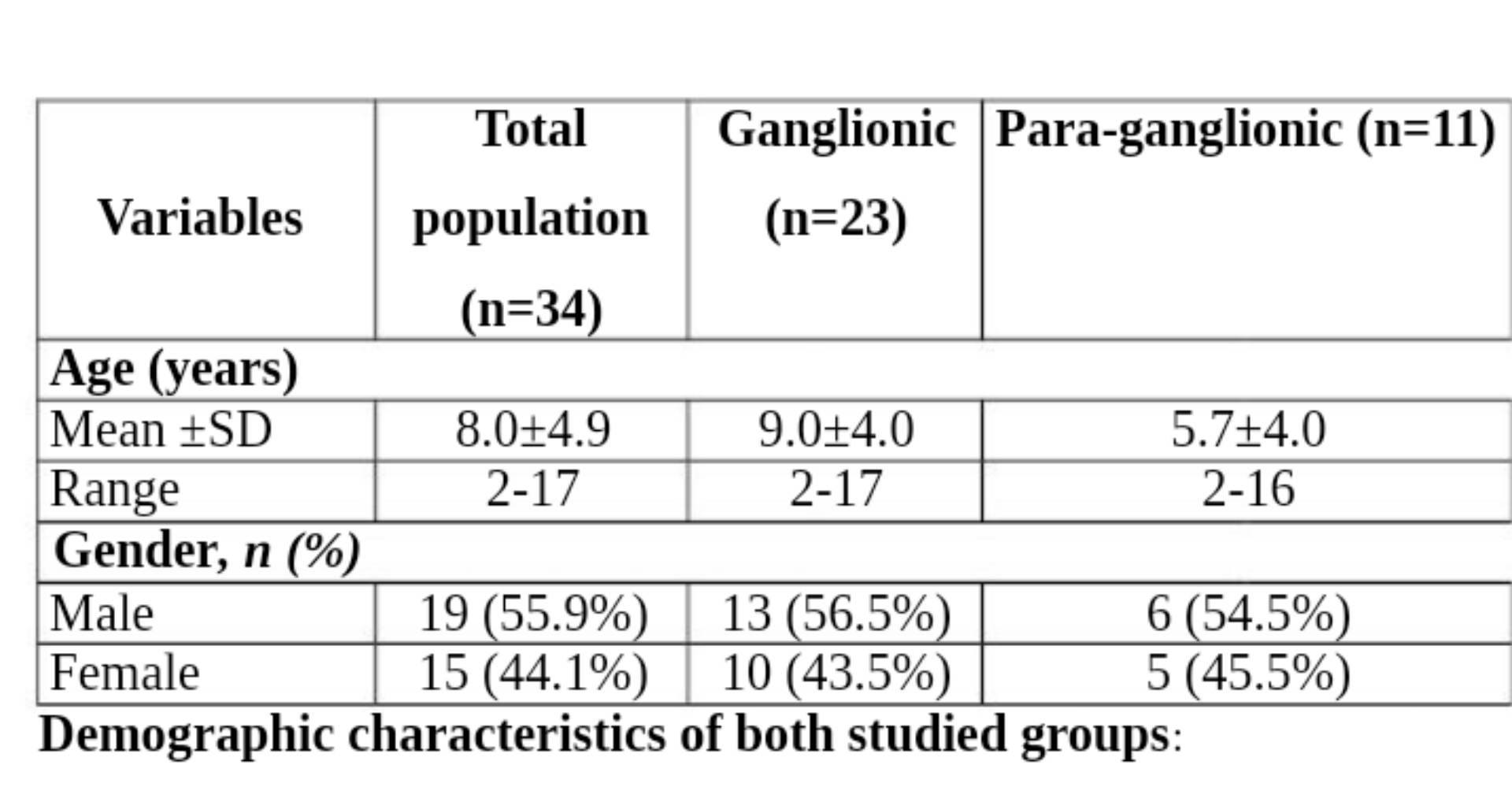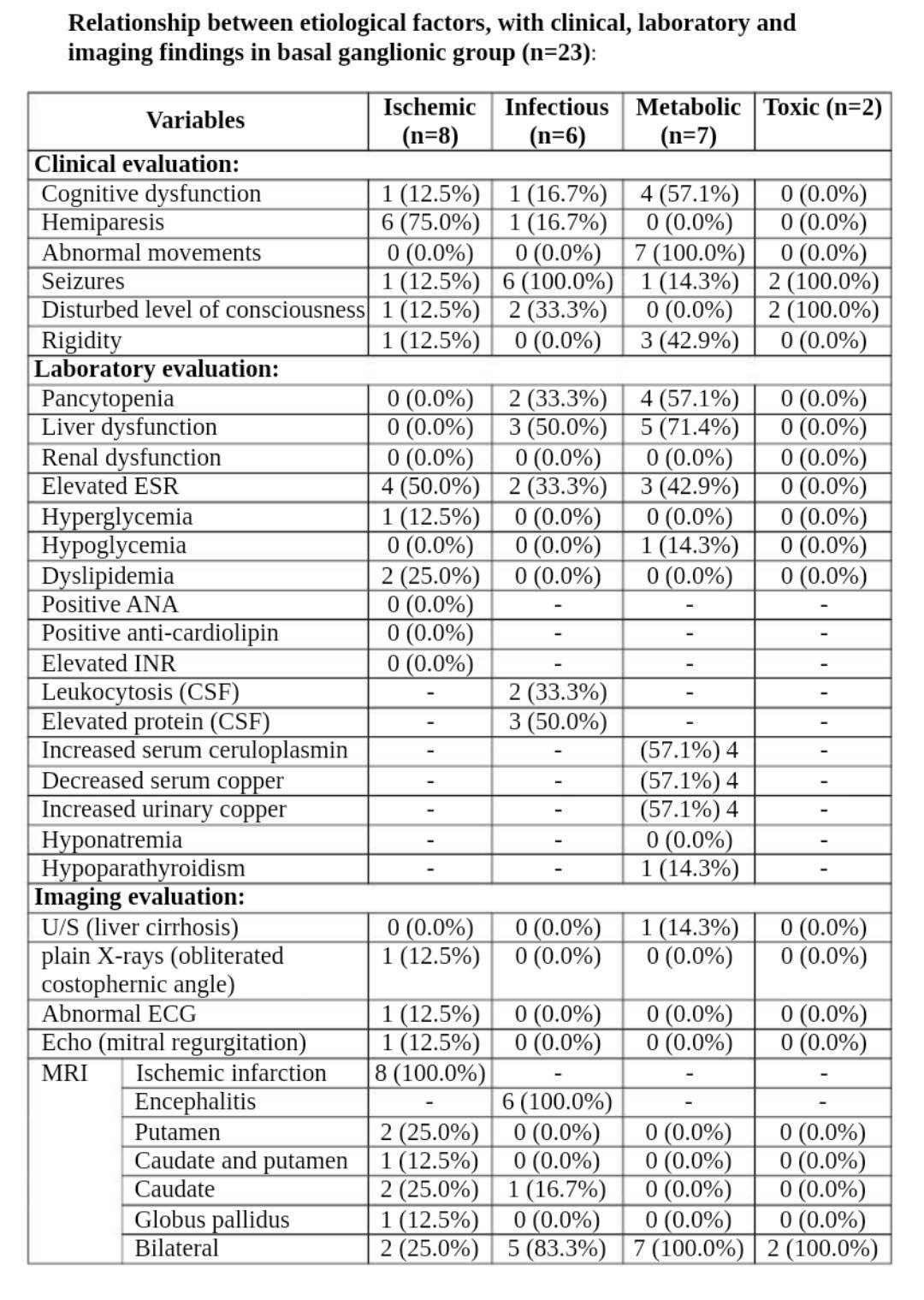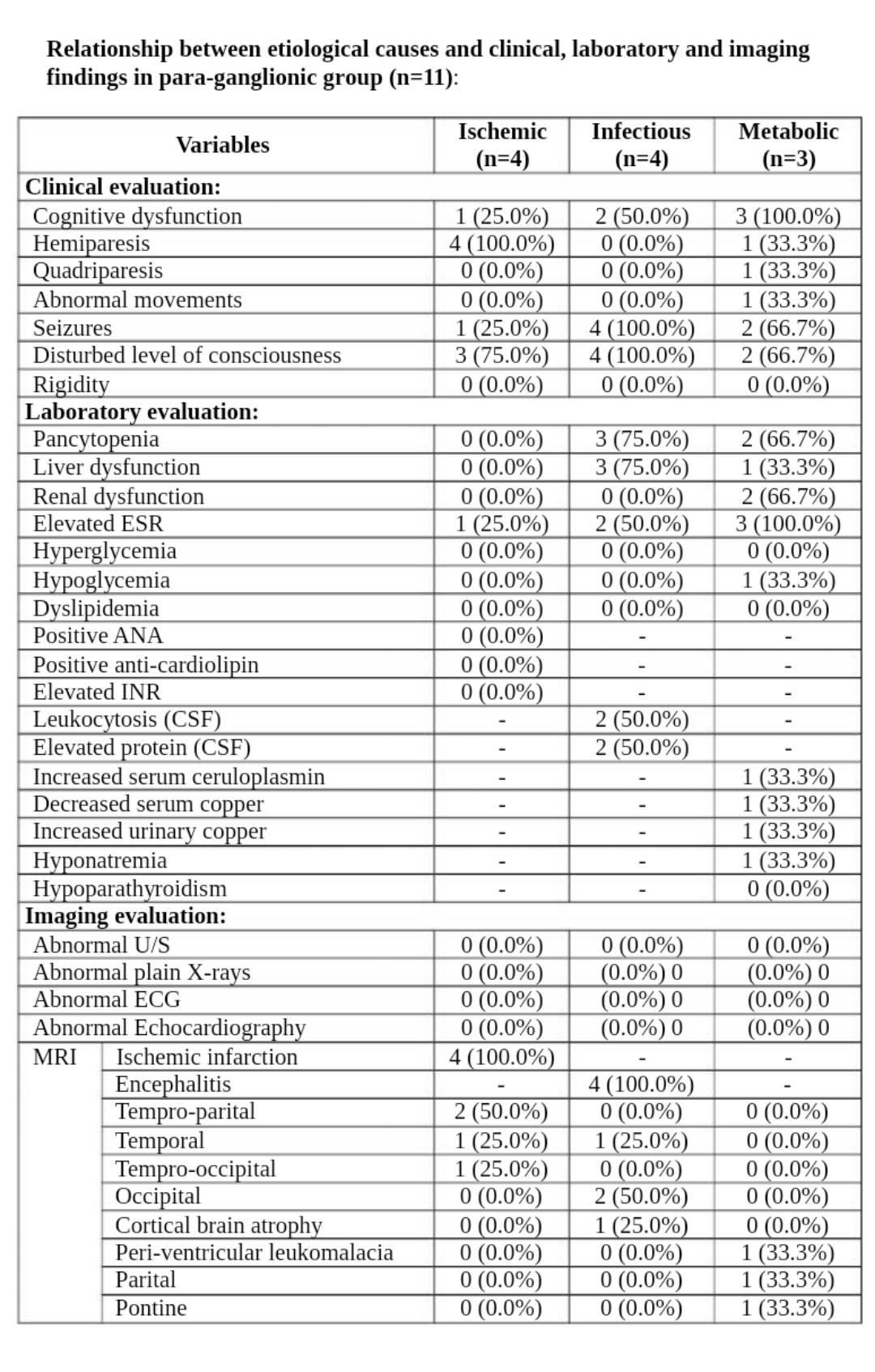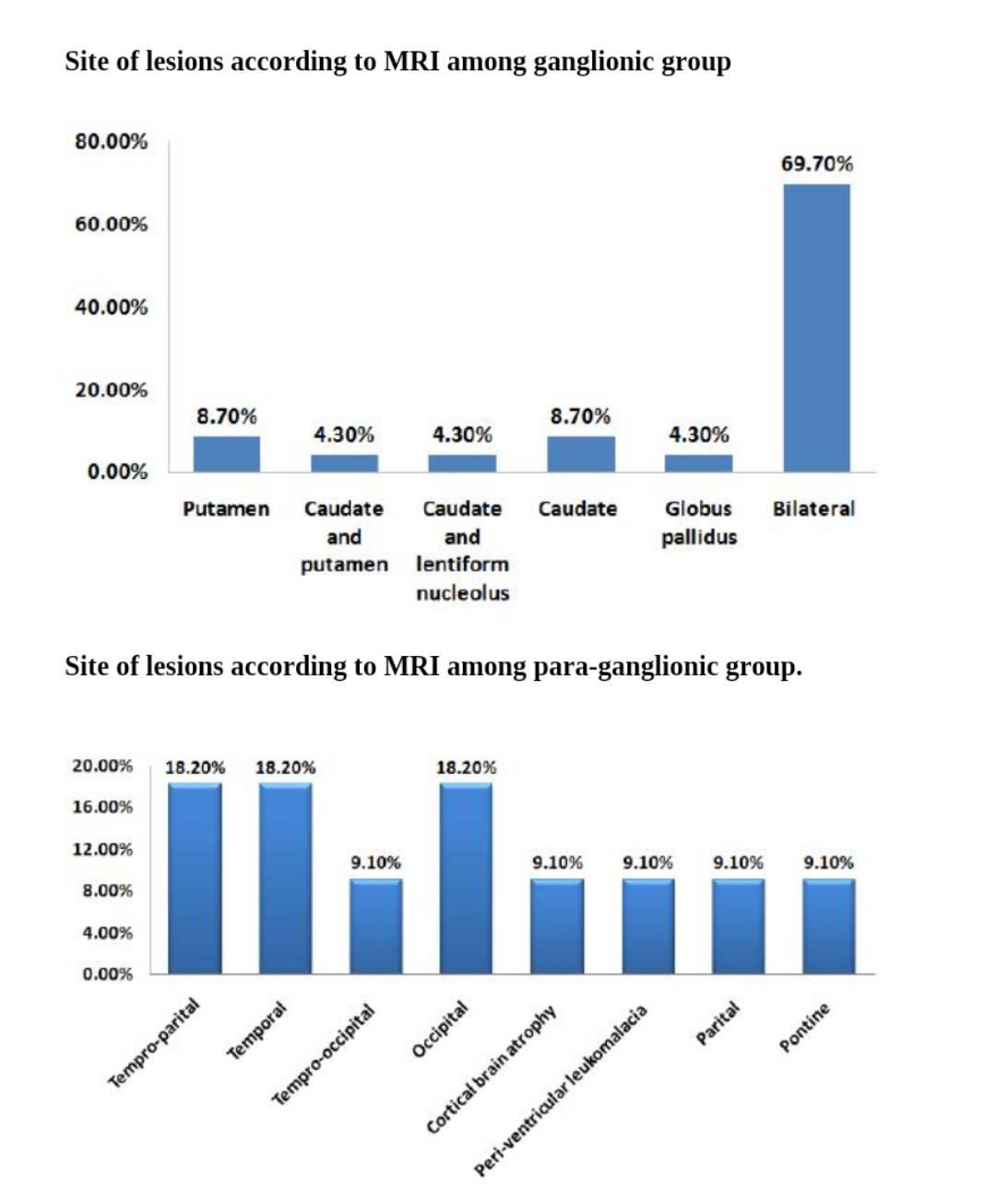Session Information
Date: Saturday, October 6, 2018
Session Title: Pediatric Movement Disorders
Session Time: 1:45pm-3:15pm
Location: Hall 3FG
Objective: to determine the etiology of basal ganglionic disorders in a sample of Egyptian children.
Background: In childhood, the metabolic activity of the basal ganglia is greater and they are particularly prone to injury, that causes problems controlling movement, muscle tone and cognition.
Methods: A cross sectional observational study was utilized on 34 patients attended at the Pediatric Neuro Outpatient Unit of Neurology department at f Al-Azhar University Hospitals during a period of one year from November 2014 to November 2015. A specialized pediatric neurological sheet, Cognitive assessment using Stanford-Binet Intelligence Scale and Laboratory investigations were performed. The included patients were classified according to MRI into two groups; ganglionic (included patients with isolated basal ganglionic lesions) (n=23) and para-ganglionic ( included patients with combined ganglionic and para-ganglionic lesions) (n=11).
Results: Frequency of male was higher than female patients in both groups without significant difference ( 13 (56.5%) versus 6 (43.5%) and 10 (54.5%) versus 5 ( 45.5%), in ganglionic and para-ganglionic groups, respectively). acute ischemic stroke was the most frequent cause, which was found in 12 (35.3%) cases, followed by 10 (29.4%) had metabolic and infectious causes, and lastly 2 (5.9%) had toxic causes. The incidence of toxic causes (CO poisoning) was higher among ganglionic group compared to para-ganglionic group (2(8.7%) versus 0(0.0%), respectively).
Conclusions: Acute ischemic stroke was the most frequent cause of basal ganglionic lesion in a sample of Egyptian children.
References: 18-Bekiesinska-Figatowska M, Mierzewska H, Jurkiewicz E. 2013. Basal ganglia lesions in children and adults. Eur J Radiol. 82(5):837-49. 19-Zuccoli G, Yannes M, Nardone R, Bailey A, Goldstein A. 2015. Bilateral symmetrical basal ganglia and thalamic lesions in children: an update (2015). Neuroradiol. 57(10):973-89.
To cite this abstract in AMA style:
H. Zehry, S. Darwish, S. El zayat, H. Gad, H. Emam, M.. Basal Ganglionic Lesions in Egyptian Children: Radiological Findings in Correlation with Etiology and Clinical Manifestations [abstract]. Mov Disord. 2018; 33 (suppl 2). https://www.mdsabstracts.org/abstract/basal-ganglionic-lesions-in-egyptian-children-radiological-findings-in-correlation-with-etiology-and-clinical-manifestations/. Accessed April 1, 2025.« Back to 2018 International Congress
MDS Abstracts - https://www.mdsabstracts.org/abstract/basal-ganglionic-lesions-in-egyptian-children-radiological-findings-in-correlation-with-etiology-and-clinical-manifestations/




